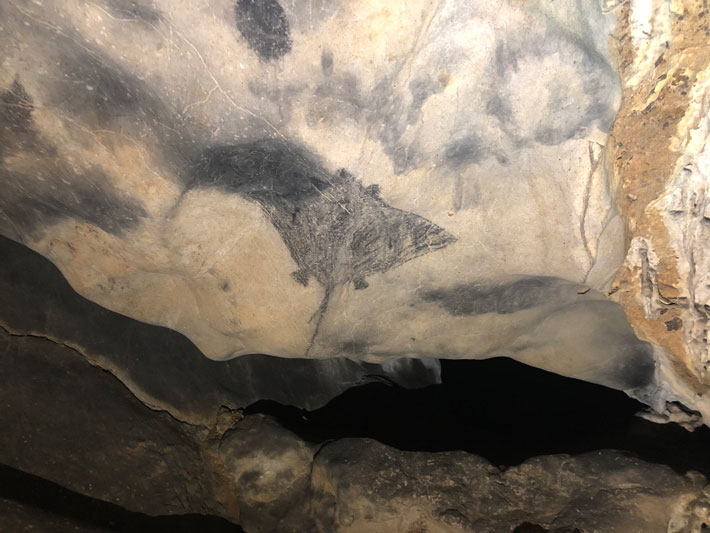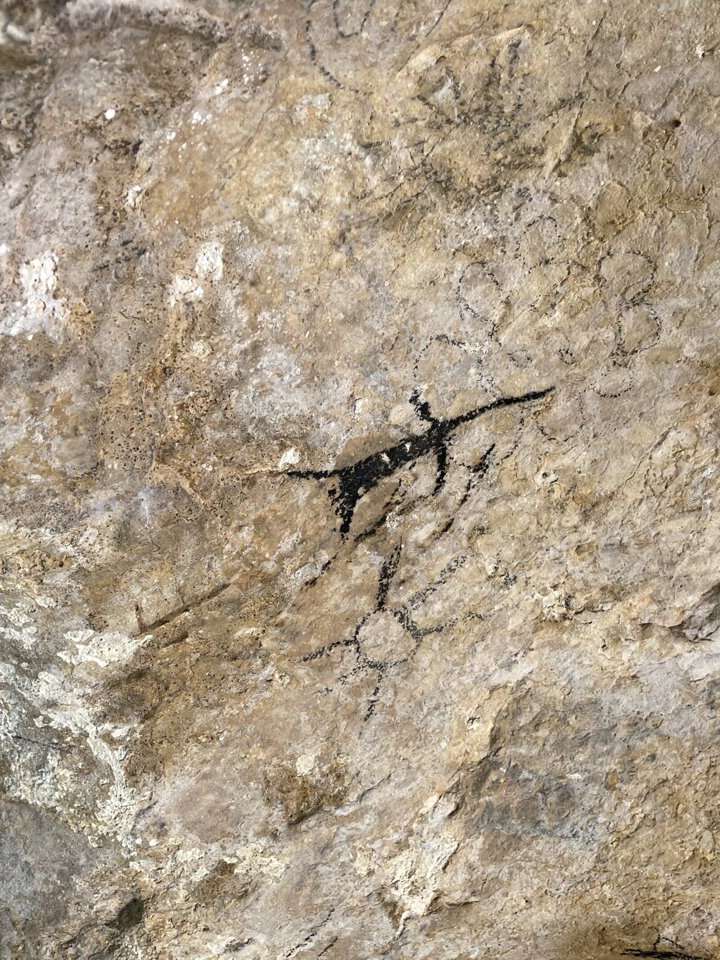Latin America
Related: About this forumRadiocarbon Dating Pushes Back Age of Puerto Rico's Cave Art
Friday, October 20, 2023

Radiocarbon Dating Pushes Back Age of Puerto Rico's Cave Art
Friday, October 20, 2023
Puerto Rico Stingray Rock Art(A. Acosta-Colon)ARECIBO, PUERTO RICO—According to a statement released by the Geological Society of America, geophysicist Angel Acosta-Colon of the University of Puerto Rico at Arecibo and archaeologist Reniel Rodríguez of the University of Puerto Rico at Utuado collected samples of 61 pigments used to create pictographs in 11 caves on La Isla Grande, the largest island in the Puerto Rican archipelago, for radiocarbon dating by scientists at the University of Georgia. The study suggests that the oldest pictographs on the island date to between 700 and 400 B.C. “This proves that we were here [thousands of] years before the European invasion,” said Acosta-Colon. Samples taken from images resembling human bodies were dated to between A.D. 200 and 400. “We have gaps of time and that’s interesting because we don’t know what happened,” he continued. However, additional samples of paint taken from art in other areas could fill in these gaps, Acosta-Colon explained. More detailed drawings were dated from A.D. 700 to the time of European colonization around 1500, the researchers concluded. For more on rock art in Puerto Rico, go to "Spiritual Meeting Ground," one of ARCHAEOLOGY's Top 10 Discoveries of 2016.
https://www.archaeology.org/news/11849-231020-puerto-rico-occupation
~ ~ ~
OCTOBER 17, 2023
New dating of cave art reveals history of Puerto Rican people
by Sarah Derouin, Geological Society of America

Cave art can sometimes include two different times of creation. In this image, the darker lizard is a younger drawing than the sun that is drawn beneath it. Credit: A. Acosta-Colon.
In the karstic caves of Puerto Rico, cave art paints the rock walls. Previous research has assigned ages to this art based on the ages of nearby archaeological artifacts within the caves, but these ages are relative and may not reflect the true timing of the art creation.
Now, a new study to be presented Wednesday at the Geological Society of America's GSA Connects 2023 meeting shows that researchers have refined the age of this rupestrian art by dating the pigment in the drawings. Angel Acosta-Colon, a geophysicist at University of Puerto Rico (UPR) at Arecibo, will present the findings.
In Puerto Rican caves, there are three types of art: petroglyphs (carved into the rock), pyroglyphs (drawn from the burnt remnants of objects), and pictographs, or cave drawings. Acosta-Colon says these pictograph drawings are in organic black material, perfect for radiocarbon dating.
Acosta-Colon and his colleague Reniel Rodríguez, an archaeologist at UPR Utuado, visited 11 different caves on La Isla Grande, the big island of the Puerto Rican archipelago. From these caves, they sampled 61 pigments in pictographic art.
More:
https://phys.org/news/2023-10-dating-cave-art-reveals-history.html
~ ~ ~

Cave Walls Record Early Encounters Between Old World and New
Archaeologists discover Spanish names, Christian symbols, and indigenous art on island visited by Columbus in 1494.
BYA. R. WILLIAMS
PUBLISHED JULY 19, 2016
• 5 MIN READ
Deep in the limestone bowels of a lone island that lies 41 miles (66 kilometers) west of Puerto Rico, archaeologists have discovered a network of underground galleries full of intriguing art. Created by both indigenous peoples and early European visitors, the images record the first contact between two very different worldviews, as reported today in the journal Antiquity.
Just 19 square miles (49.2 square kilometers) in area, Isla Mona, or Mona Island, is riddled with about 200 caves. Archaeologists have explored 70, finding indigenous art in the dark recesses of more than two dozen.
The caves are the only permanent sources of freshwater on the island, now an uninhabited nature reserve. Experts see a clear connection between this resource, which makes life possible here, and the rich imagery that fills the chambers.
Fantastical swirls, lines, and figures were made by dragging fingernails through the soft surface of the walls and ceilings. “These finger-fluted designs reflect the spiritual beliefs of the indigenous people,” says investigator Jago Cooper, curator of the Americas at the British Museum in London. Cooper's work is supported in part by a grant from the National Geographic Society.
Representing the most diverse collection of such motifs in all the Caribbean, the thousands of designs catalogued so far include
More:
https://www.nationalgeographic.com/history/article/cave-art-caribbean-mona-island-first-contact-archaeology